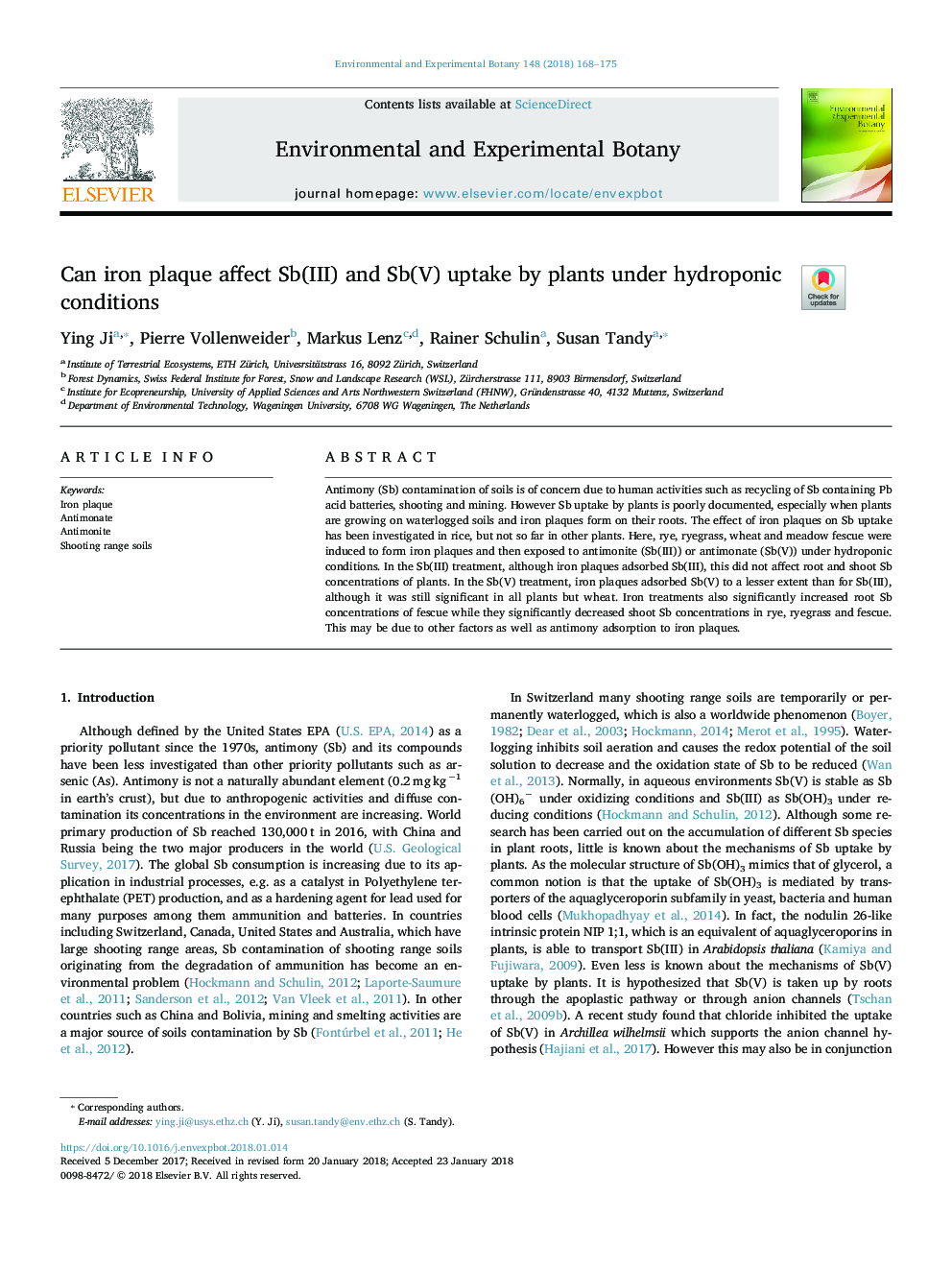| Article ID | Journal | Published Year | Pages | File Type |
|---|---|---|---|---|
| 8887062 | Environmental and Experimental Botany | 2018 | 8 Pages |
Abstract
Antimony (Sb) contamination of soils is of concern due to human activities such as recycling of Sb containing Pb acid batteries, shooting and mining. However Sb uptake by plants is poorly documented, especially when plants are growing on waterlogged soils and iron plaques form on their roots. The effect of iron plaques on Sb uptake has been investigated in rice, but not so far in other plants. Here, rye, ryegrass, wheat and meadow fescue were induced to form iron plaques and then exposed to antimonite (Sb(III)) or antimonate (Sb(V)) under hydroponic conditions. In the Sb(III) treatment, although iron plaques adsorbed Sb(III), this did not affect root and shoot Sb concentrations of plants. In the Sb(V) treatment, iron plaques adsorbed Sb(V) to a lesser extent than for Sb(III), although it was still significant in all plants but wheat. Iron treatments also significantly increased root Sb concentrations of fescue while they significantly decreased shoot Sb concentrations in rye, ryegrass and fescue. This may be due to other factors as well as antimony adsorption to iron plaques.
Keywords
Related Topics
Life Sciences
Agricultural and Biological Sciences
Ecology, Evolution, Behavior and Systematics
Authors
Ying Ji, Pierre Vollenweider, Markus Lenz, Rainer Schulin, Susan Tandy,
